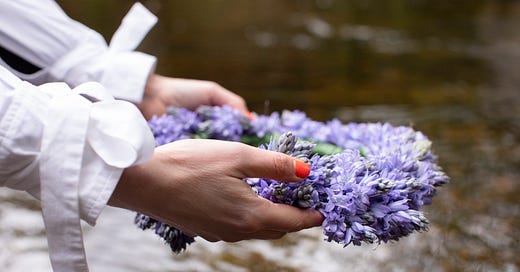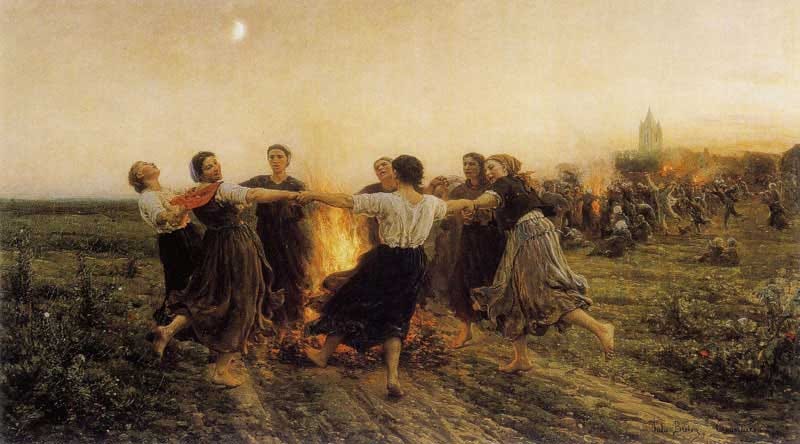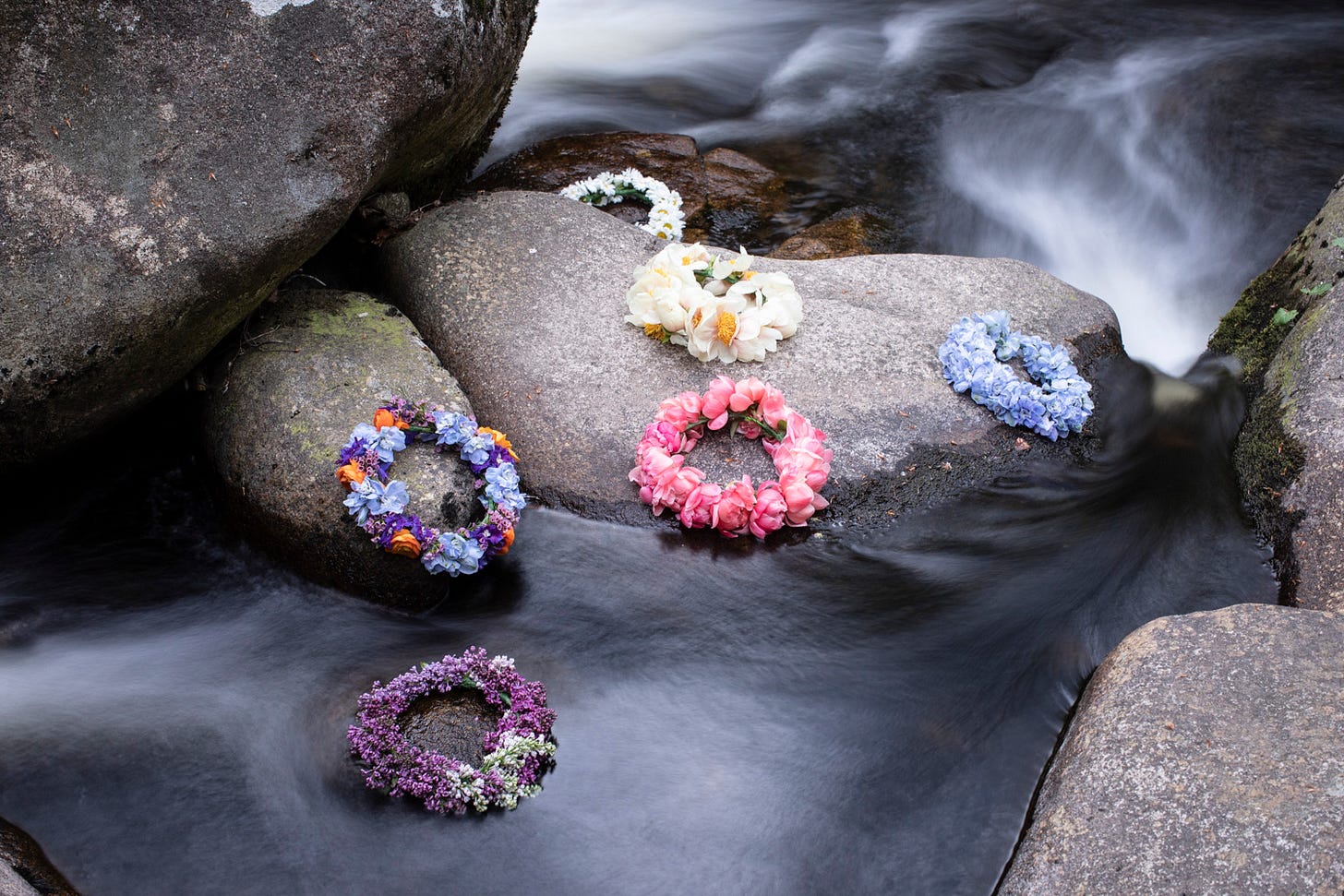Our Friday floral story : Love blooms at Midsummer
Throwing it back to celebrate the Summer Solstice flower fern traditions
Samhradh, samhradh, bainne na ngamhna
Thugamar féin an samhradh linn
Samhradh buí na nóinín gléigeal
Thugamar féin an samhradh linn
The Summer Solstice or ‘Grianstad an tSamhraidh’ in Irish, fast approaches this Saturday, June 21st. Not only does this longest day in the Northern Hemisphere mark the exact time of the cross-quarter moment between Bealtaine & Lunasa in August but also the halfway point of our calendar year. It is the day when ‘sun stands still’ (meaning of the word ‘solstice) in hopefully our blue skies. The poignant song ‘Samhradh Samhradh’ by The Gloaming fills my heart with June joy - listening to Iarla O’Lionard sing about Summer feels like a hummingbird delightfully fast dancing whilst drinking nectar honey.
The National Folklore Collection, always a wonderful resource, fascinates me with this capture of a traditional bonfire night from before. Our Grianstad June gatherings seem now only as happenings found at large spiritual fires in traditional faerie or druid sites like Lough Gur in Limerick or Uaisneach in Meath :
“The young people make preparations for bonfire night. They gather turf, sticks, shavings and fir. They light the fire a little after sundown. Generally there is a fire at every house and on a small hill a large fire is lighted. The young people gather to this large fire later. There is a custom connected with bonfire night. It is called “Blessing the Crops”. The young people make torches. They get a bag and they dip it in oil. Then they tie it to a seasoned piece of fir. Each person gets a torch.
Then the young people walk from one cultivated field to another. They make the sign of the cross on each field. Then they think that God will bless the crops. One would think that it was the fairies that were moving about through the fields.
When the crops are blessed they return to their own bonfire. Families sit around the fire and there are cheers and counter cheers. Each family likes to have the biggest fire in the district. After a while the fires die out and the young people go to the large fire on the neighbouring hillside.
They bring melodeons and mouth organs with them. They dance and sing around the fire. Sometimes they go from one bonfire to another, and they play their melodeons along the way. They then return home at break of day.”
IN MIDSUMMER FLOWER MAKING
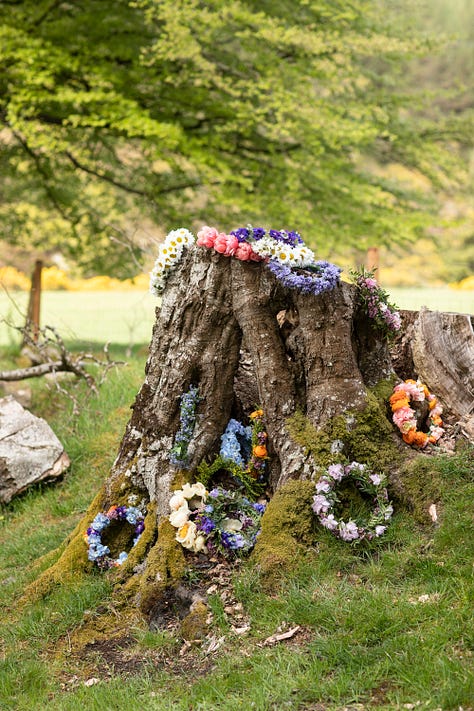
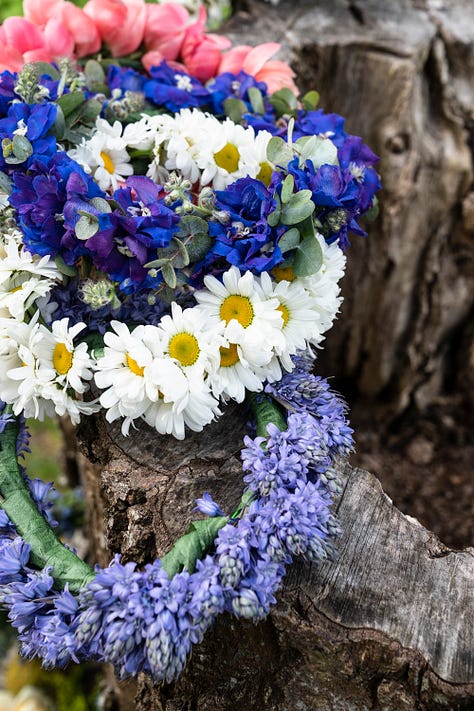

Midsummer, for us, is always the time of ripened voluptuous flowers. It is the season when we see so much colour from the dustiest hues of blues and pinks, to bright greens adding liveliness to then the punkiness of corals and fuschias punching through….Carpets of peonies in all their icecream forms, sweetpeas grown here in their full glorious selves, garden roses arrive and spoil us with their unfurlings each day. The best bit is that fragrance is so full this time of year.
I am throwing it back a bit this week to when we asked our team to make their favourite summer flower crowns for our Midsummer Blathanna shoot. Every one of our floristas made a different element reflecting their own favourite styles and choices, basing their ideas of the flower meanings, histories and emotions
This chapter celebrating Kupala, an Polish solstice tradition combines a fusion of our ancient Irish & druidic traditions, each in it’s own right, about love stories in landscape.
Enjoy X
THE RIVER - KUPALA, KWIATY, WIANKI – A CONFLUX OF CULTURES, WATERS & WREATHS
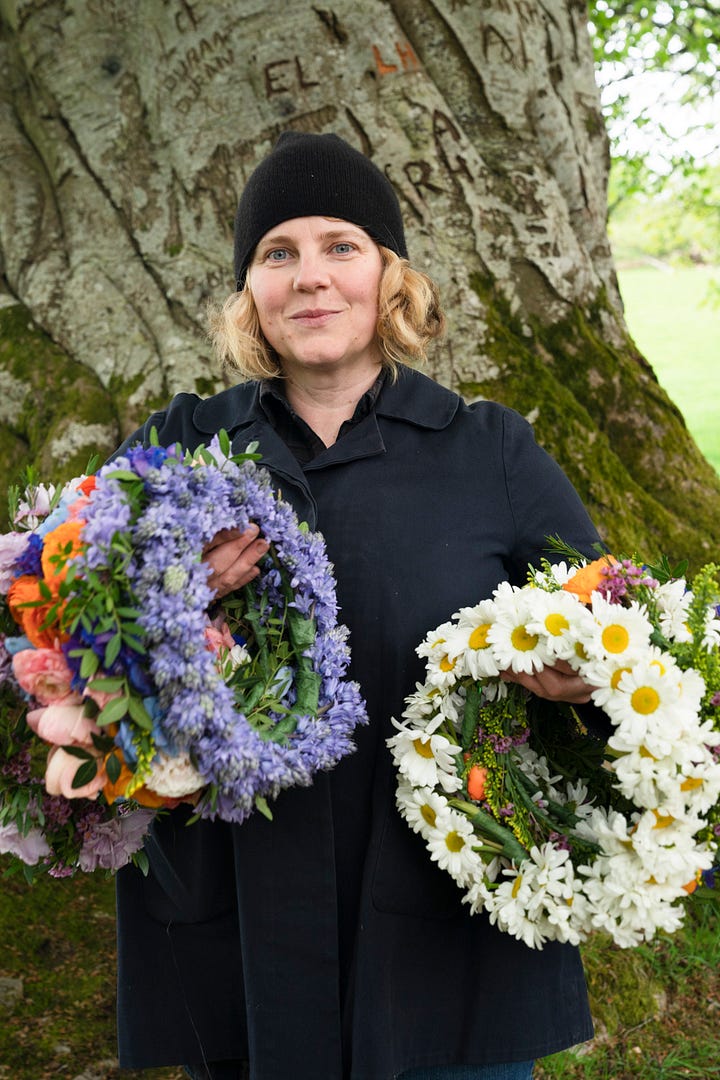
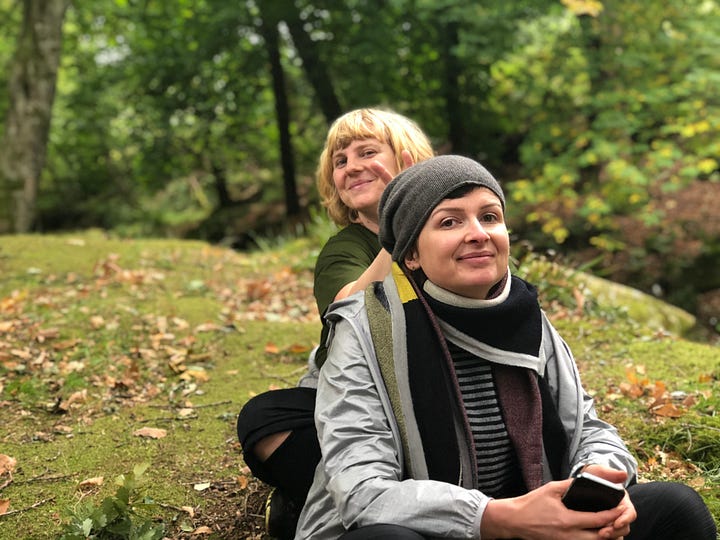
Whether we call them bláthanna, kwiaty or flowers, the joy of our working space is the learning we learn from our mix of cultures & flower histories in our team. When Kasia described the Kupala Midsummer tradition from home, we knew that we should herald this celebration in an Irish space. And then we discovered the most special of spots where the Liffey and Shankill flowing river bodies meet under the Cloghleagh bridge in a confluence of Dublin and Wicklow counties then moving towards the Poulaphouca reservoir. The rest is a flower love story of landscape at summer solstice…
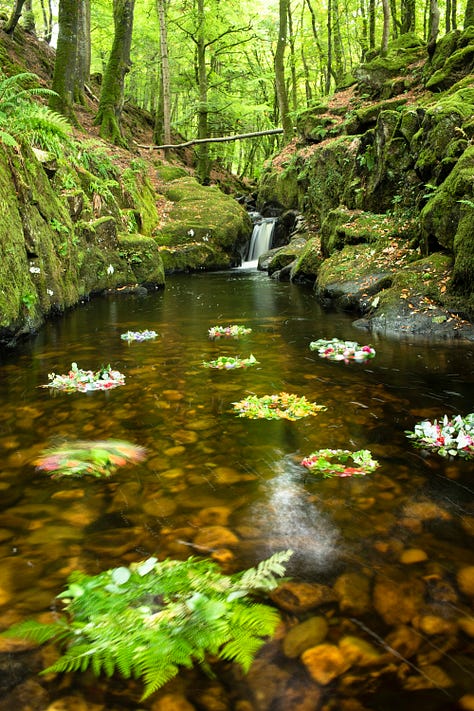
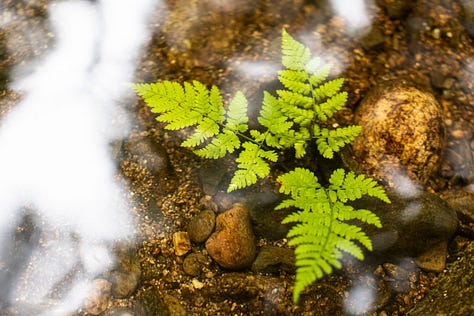
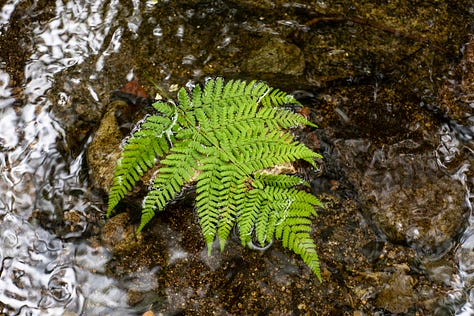
Just to introduce this Slavic tradition of Kupala. On the shortest night of the year (The turn of 23-24 June, or St John’s Eve), pagan people would celebrate the solstice by delighting in fire, water, fertility and joy. Wianki or wreaths were wound with wildflowers of the midsummer season and girls would float them in a flowing river trying to fortune tell their relationship futures by the pattern the flower head bands created if they hopefully floated along the way. Hopefully they wouldn’t sink…
Sometimes men would try and capture a maiden’s wreath as a way of capturing her heart too. What is even more special about this Kupala tradition is that on the eve of Ivan Kupala, it was believed that this night would be the only time of year that a mystical fern would bloom. If found by a lucky fern flower seeker, prosperity, luck, discernment & power would befall them. By complete coincidence, there is an Irish ancient belief too that the finder of special fern seed would make the gatherer good at cards and render them invisible too.
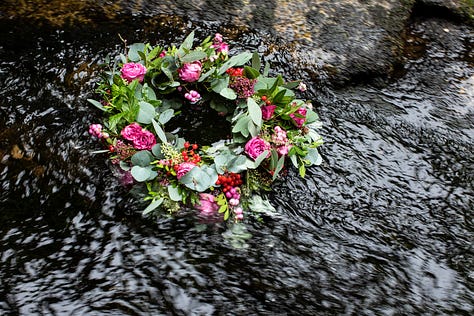
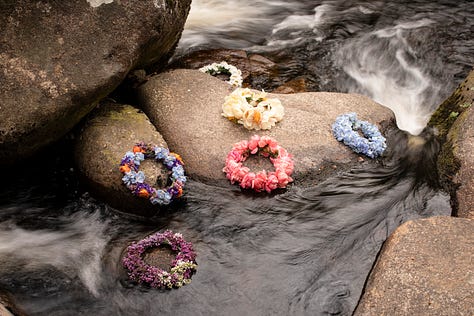

The next part of the Kupala custome is our favourite. Traditionally, the village virgins/unmarried women, signified their wearing of hair garlands, would enter the forest in search of the aforementioned fern flower. The village men/suitors would follow. The unfurling of this fern flower symbolized the blossoming of love amidst the magical depths of the forest. The rest of this is left to your imagination…
LETTING THE CROWNS GO
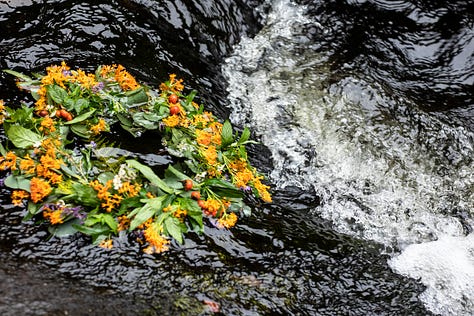

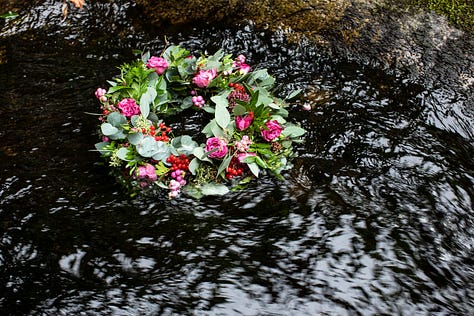
To stand on the mossy lichened banks of the end of the Liffey as it pools and swirls beneath emerald green oaks & moss peat is meditiative. We climbed down carefully below the bridge trying to find the spot where the wreaths should first be thrown. Wellies & wetsuits were worn which did not evoke the maidens throwing their love wiankis to the river passage, midges burned our scalps, but the setting worked. Sunlight streamed in pockets through the whispering green canopy of oak and beech, moss carpets stretched down to the water and the river was so clear that we could see every pebble waiting to be picked up for skimming.
We stood at the base of the bridge balancing on the slippy emerald sheened rocks holding poles…Ultan placed each wreath just after the fall of the delicate waterfall which sent each headband swirling around and around. This tradition is all about the journey of the floral wreath and we watched as they whirled, dipped, drowned, wobbled until they reached downstream where the water current accelerated in speed. After the wreaths journey under the bridge, they arrived in velvet sheened river water to a woodland wonderland with gnarled ancient oak trees full of midsummer greens and their roots spreading their tendrils so you might trip over the. Here, the river opened up into multiple streams all moving fast over large groupings of rocks then being stopped so creating rockpools. These waylaid some wreaths who wound around and around in the whirl. Others pushed on in the current through the sunlight on their way to new waterways ahead.
This floral story allowed us to lose our imagination and create a setting for love to be found. We mightn’t have found a flowering magical fern that day but the stillness of staying in the surrounds of water, woods and birdsong allowed us all to enjoy a new adventure for our flower head bands that we all had made.
FLOWERS WE USED TO MIDSUMMER UP THE DAY
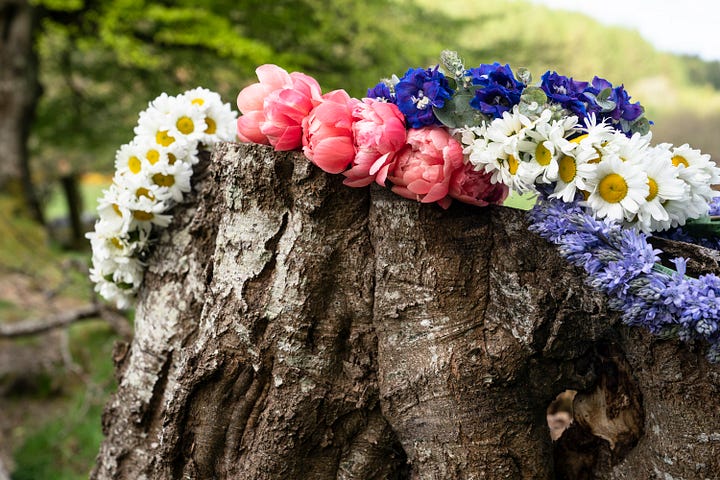
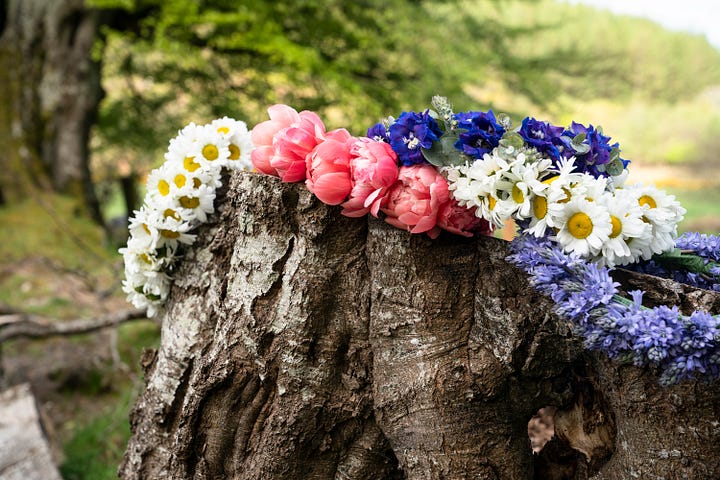
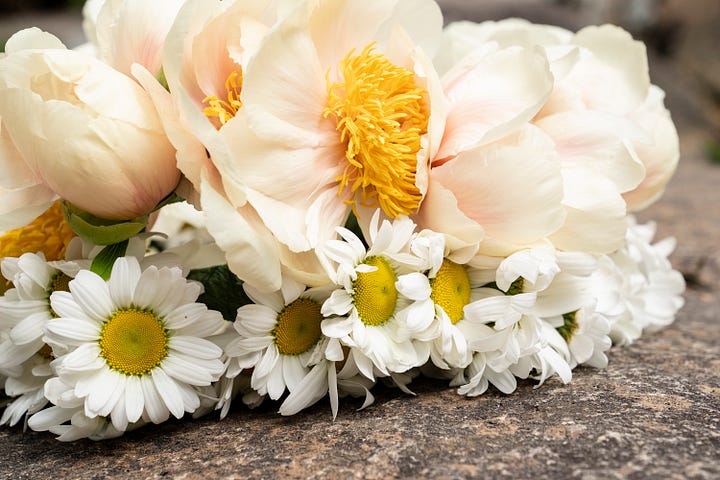
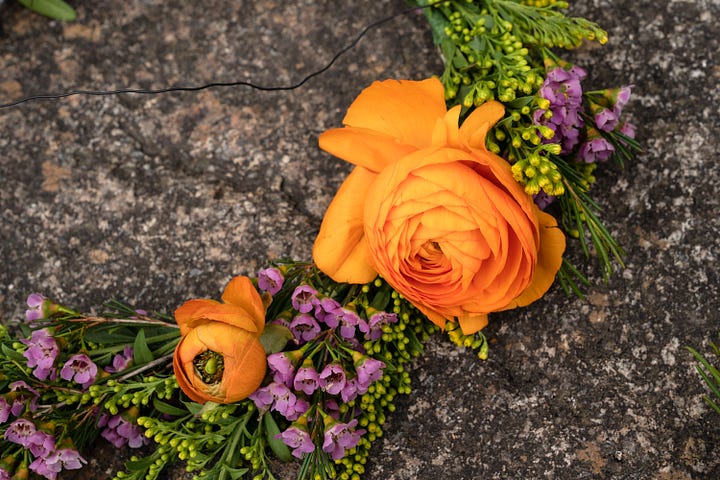
THE FERN – fearn - (Fearn/Raithneach Mhor )–
The fern is also a fairy plant here due to its reputation in Irish folklore. And when we bring the term conflux into mind and memories of a memory of walking in a treecovered wood with brackens & ferns we love unfurling as you trail. We found out that a fairy changeling banished, would turn into a clump of fern. It also appears in Irish myth as a magical plant because they bear neither flowers or fruit but produce mysterious seeds called spores. In the tale ‘The Cattle Raid of Cooley’, the warrior Nera enters a fairy mount at Samhain. Because it’s summer in fairyland, he returns from the mound with armfuls of wild fern, garlic and primrose…Excavations of Viking Dublin also show that ferns were used as bedding & thatching too. However, it is not used in folk medicine as it is poisonous when brewed!
NA MBLATHANNA / FLOWERS
Bombastic Roses · Larkspur - Oxypetal Tan Blu - Margarite DaisiesCoral Peonies - Delphinium - Bluebells (Polish as we didn't want to pick the wild Irish ones) - White Peonies - Myosotis - Waxflower - Orange & Pink Ranunculae - Lisianthus Alissa Pink - Pistachia - Lilac - Eucalyptus - Gentiana - Cosmos - Foraged ferns - Rosehips - Roses - Viburnum Compactum-


